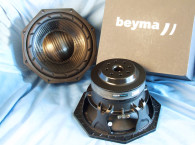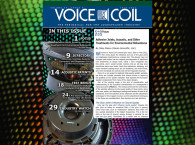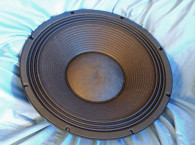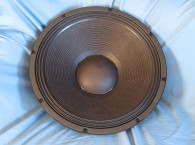Features for the Beyma are like most high-performance pro sound drivers, rather substantial. Starting with the frame, the Beyma 12LEX1300Nd (Photo 1) uses a proprietary 10-spoke (five twin spokes) cast-aluminum frame incorporating 10 25mm × 5mm rectangular vent holes in the area below the spider mounting shelf (Photo 2) for enhanced voice coil cooling. This series of cooling vents allows air to move past the voice coil and across the front side of the neodymium motor assembly.
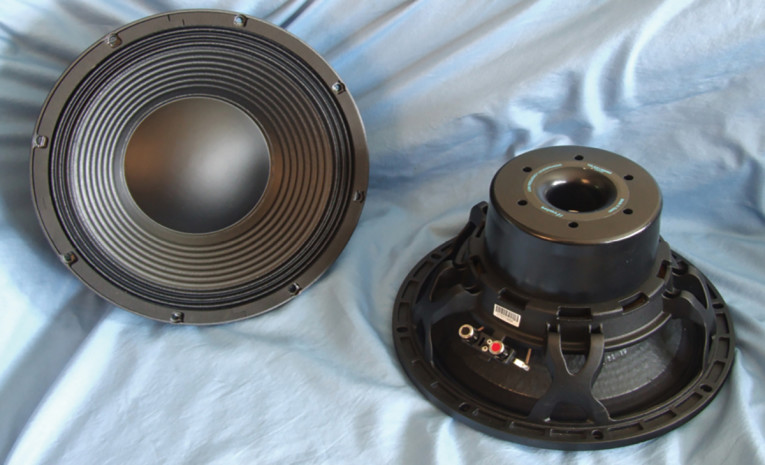
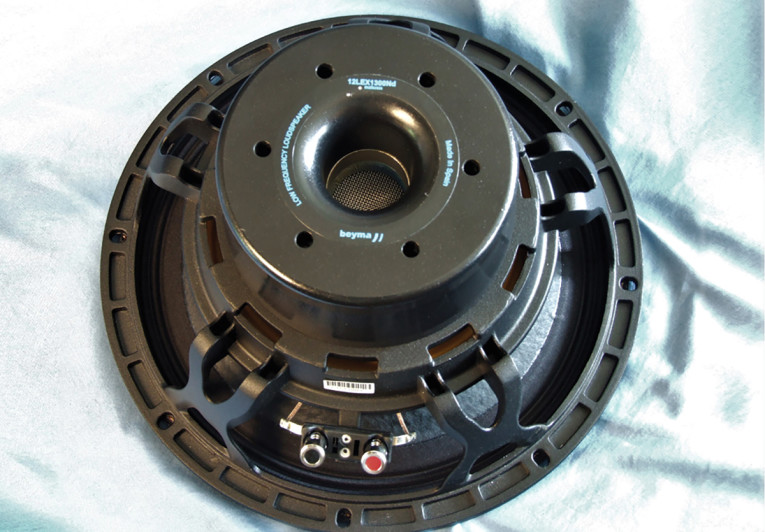
Additional cooling is provided by a 45mm diameter flared pole vent and six 8mm diameter peripheral vents and the back of the neodymium motor return cup. All this is part of the Beyma Maltcross forced convection cooling system (Figure 1) that includes using the aluminum shorting ring as part of the cooling process. This is an outstanding cooling technology. Generally, when I am performing the LinearX LTD parameter multivoltage measurement process on large pro sound drivers, the final two sweeps are often upward of 40V and I can smell the outgassing of the adhesives as the voice coil heats up. However, the Beyma 12LEX1300Nd, after two 40V sweeps and a 50-second oscillator on period before each sweep at 200Hz was still cool enough for outgassing not to occur.

The cone assembly consists of a flat profile ribbed paper cone with a waterproof coating on both sides of the cone along with a 5.5” diameter paper dust cap, likewise with a waterproof coating. Compliance is supplied by a three-roll pleated cloth surround, with the remaining compliance coming from a double silicone 7” diameter flat spider (damper). Tinsel leads are stitched into the spider for long-term stability.
The motor design on the Beyma 12LEX1300Nd utilizes a FEA-optimized neodymium magnet structure driving a 101.6mm (4”) diameter voice coil wound with round copper wire on a non-conducting glass fiber former. Motor parts, the return cup, and the frontplate are coated with a black heat-emissive coating for improved cooling. Integral to this motor is an aluminum demodulation ring (shorting ring aka Faraday shield) for distortion reduction. Last, the voice coil is terminated to a pair of chrome-plated color-coded push terminals.
I commenced testing of the Beyma 12LEX1300Nd using the LinearX LMS analyzer and VIBox to create both voltage and admittance (current) curves with the driver clamped to a rigid test fixture in free-air at 1V, 3V, 6V, 10V, 20V, 30V, and 40V, again allowing the voice coil to progressively heat up between sweeps. The Beyma driver remained sufficiently linear enough for LEAP 5 to curve fit the impedance at the 40V level, and probably would have stayed linear up to at least 50V in free-air.
Following my established protocol, I no longer use a single added mass measurement and instead use the manufacturer-supplied Mmd data (117.6 grams for the Beyma 12LEX1300Nd). The 14 550-point stepped sine wave sweeps for each 12LEX1300Nd sample were post-processed and the voltage curves divided by the current curves to generate impedance curves, with the phase derived using the LMS calculation method. I imported the data, along with the accompanying voltage curves, to the LEAP 5 Enclosure Shop software.
Because Thiele-Small (T-S) parameters is usually generated using either the standard model or the LEAP 4 TSL model, I additionally created a LEAP 4 TSL parameter set using the 1V free-air curves. I selected the complete data set, the multiple voltage impedance curves for the LTD model, and the 1V impedance curve for the TSL model in the Transducer Model Derivation menu in LEAP 5 and created the parameters for the computer box simulations. Figure 2 shows the 1V free-air impedance curve. Table 1 compares the LEAP 5 LTD and TSL data and factory parameters for both of the Beyma 12LEX1300Nd samples.
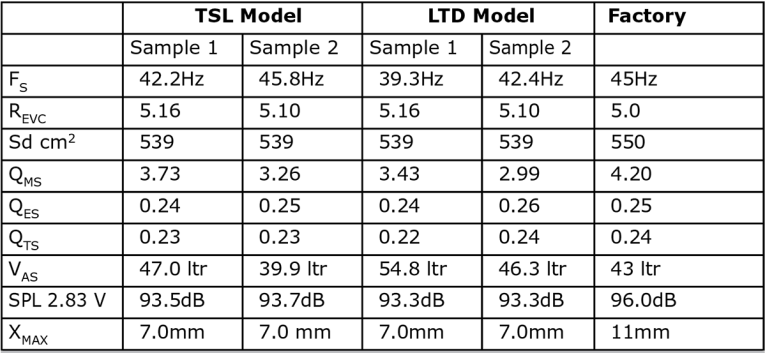
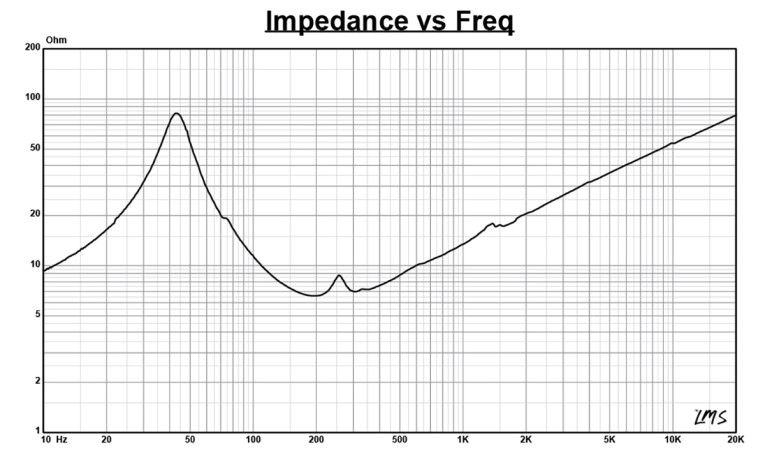
LEAP 5 parameter calculation results for the Beyma 12LEX1300Nd were in close agreement with the published factory data, but with a couple of minor exceptions. The first is the sensitivity numbers, but that is due to the method used by Beyma that is different from the TSP resultant sensitivity that I use. The other is Xmax and Beyma does about the same thing that a number of other manufacturers do, and adds in a fraction of the gap area to the Xmax number to account for fringe fields, similar to the Xmax + 15% figure I use in enclosure simulations.
Following my established measurement protocol, I configured computer enclosure simulations using the LEAP LTD parameters for Sample 1. Two computer box simulations were programmed into LEAP 5 — one the factory-recommended vented box with a 1.58 ft3 volume (15% fiberglass fill material) tuned to 50Hz; and a smaller enclosure with 1 ft3 volume tuned to 65Hz, also simulated with 15% fiberglass damping material.
Figure 3 displays the SPL results for the 12LEX1300Nd in the two vented enclosures at 2.83V and at a voltage level sufficiently high enough to increase cone excursion to Xmax + 15% (8.1mm for the 12LEX1300Nd). This produced a F3 frequency of 46 Hz (F6 = 42Hz) for the factory recommended enclosure and -3dB = 61Hz (F6 = 55Hz) for the smaller vented simulation. Increasing the voltage input to the simulations until the maximum linear cone excursion limit (6.9mm by my criteria) was reached resulted in 124dB at 102V for the factory recommended box and 128dB for a 145V input level for the smaller vented box.
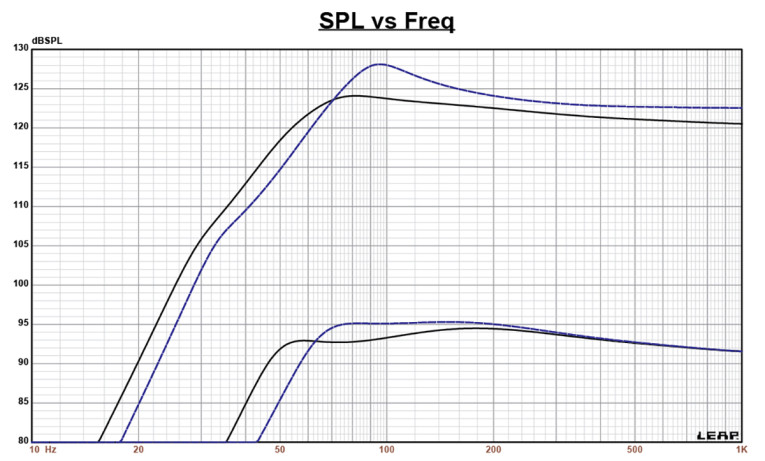
Figure 4 shows the 2.83V group delay curves. Figure 5 shows the 102/145V excursion curves. Please note that the drivers start over excursing below 50Hz, so an appropriate high-pass filter will increase the undistorted output considerably.
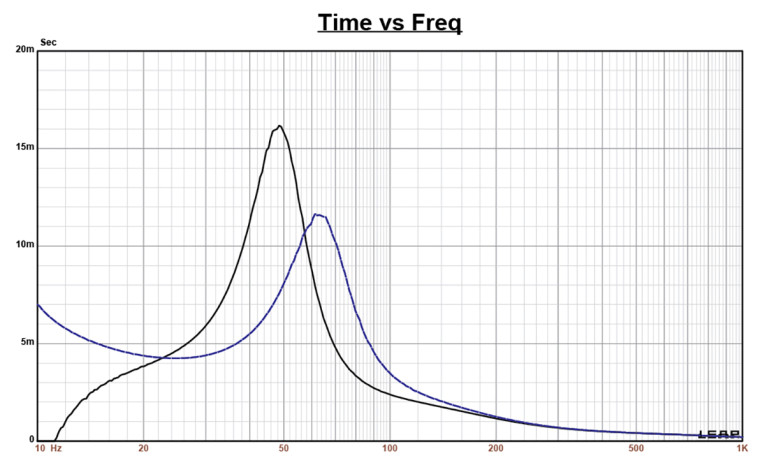
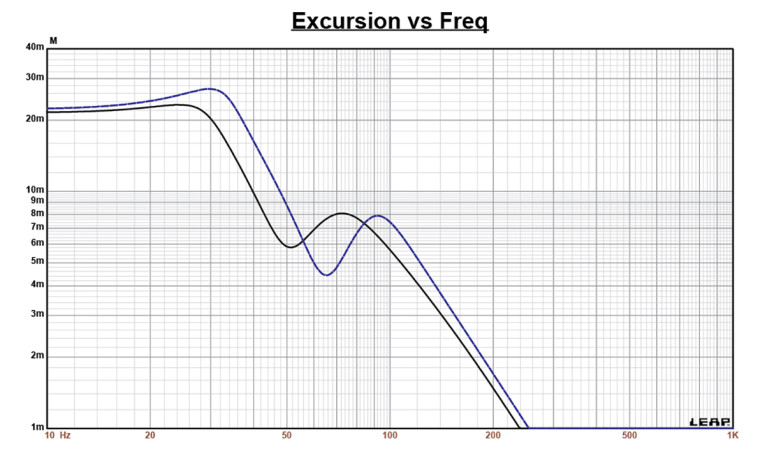
Klippel analysis for the 12LEX1300Nd woofer, performed this month by Warkwyn (Jason Cochrane performed the analysis on the KA3 analyzer) produced the Bl(X), Kms(X) and Bl and Kms symmetry range plots given in Figures 6–9. The Bl(X) curve (Figure 6) is moderately broad with a small amount of offset and practically no tilt to the curve. Looking at the Bl symmetry plot (Figure 7), this curve shows a trivial 0.44 mm coil-in (rearward) offset at 7.0mm physical Xmax position. This minor offset remains constant out to at least 10mm, so good performance.


Figure 8 and Figure 9 show the Kms(X) and Kms symmetry range (at least until we get our Klippel software updated) curves for the Beyma 12LEX1300Nd. The Kms(X) curve is also moderately symmetrical in both directions accompanied by a very small amount of coil-out offset. Looking at the Kms symmetry range plot, the coil-out offset at the 2mm to the driver’s physical 7.0mm Xmax only changes from an insignificant 0.35mm to 0.73mm. Displacement limiting numbers calculated by the Klippel analyzer for the 12LEX1300Nd were XBl @ 82% Bl = 8.4mm and for XC @ 75% Cms minimum was 4.6mm, which means that for this Beyma driver, the compliance is the most limiting factor for prescribed distortion level of 10%. If you apply the less conservative 20% criteria, XBl goes to 10.3mm and XC to 8.3, so definitely better.

Kms (X) curve for the Beyma 12LEX1300Nd
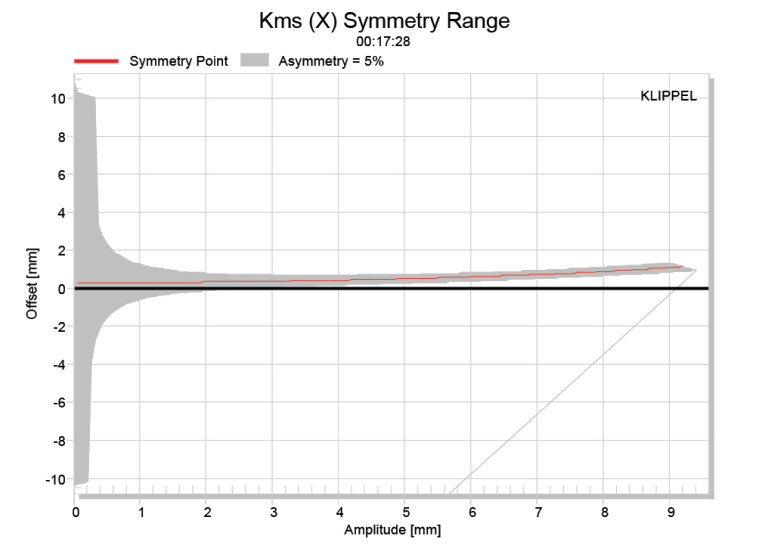
Figure 10 gives the inductance curves Le(X) for the 12LEX1300Nd. Inductance will typically increase in the rear direction from the zero rest position as the voice coil covers more pole area, which is not what is happening here, but is typical of this type of neodymium motor that incorporates an aluminum demodulation (shorting) ring. The maximum inductance swing for this driver from Xmax in to Xmax out is a reasonably low 0.18mH maximum, which is excellent performance for this powerful a neodymium motor.
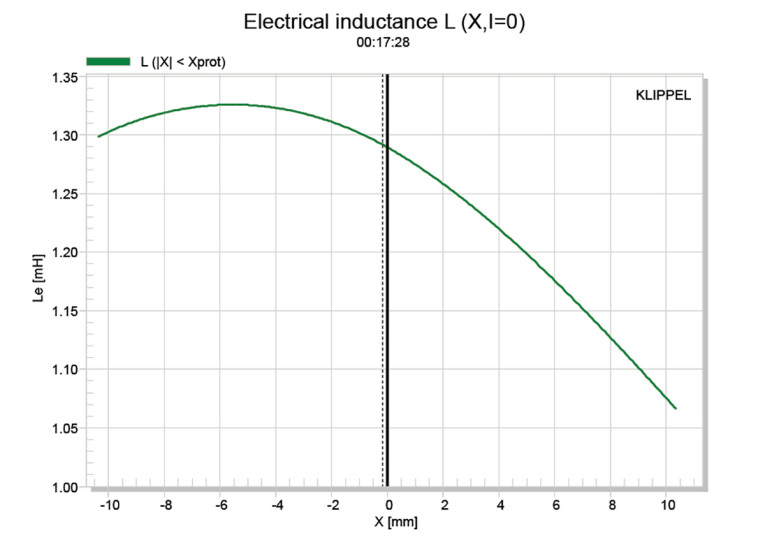
With the Klippel testing completed, I mounted the 12LEX1300Nd woofer in a foam-filled enclosure that had a 15” × 15” baffle. Then, I measured the DUT using the LoudSoft FINE R+D analyzer and the GRAS 46BE microphone (courtesy of LoudSoft and GRAS Sound & Vibration) both on- and off-axis from 200Hz to 20kHz at 2V/0.5m normalized to 2.83V/1m, using the cosine windowed FFT method.
Figure 11 gives the 12LEX1300Nd’s on-axis response, indicating a smoothly rising response to that is ±2.5dB from 200Hz to 1kHz, with a relatively low “Q” 3.5dB break-up mode peak at 1.4kHz as the driver begins its low-pass roll-off. Figure 12 displays the on- and off-axis frequency response at 0°, 15°, 30°, and 45°, showing the typical directivity for a 12” woofer. The -3dB at 30° off-axis with respect to the on-axis response occurs at 1kHz, a likely upper limit for a crossover is maintaining a decent power response.

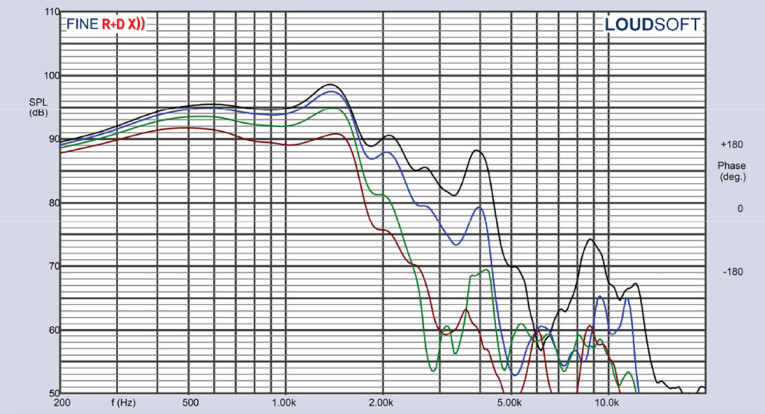
The normalized version of Figure 12 is given in Figure 13. Figure 14 shows the CLIO polar plot (in 10° increments with 1/3 octave smoothing). And finally, Figure 15 displays the two-sample SPL comparisons for the 12LEX1300Nd woofer, showing a close match within 0.25dB to 1dB throughout the operating range to 1.75kHz.
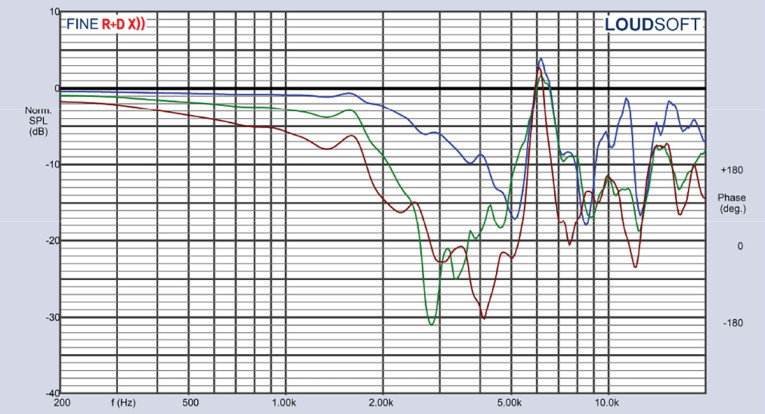
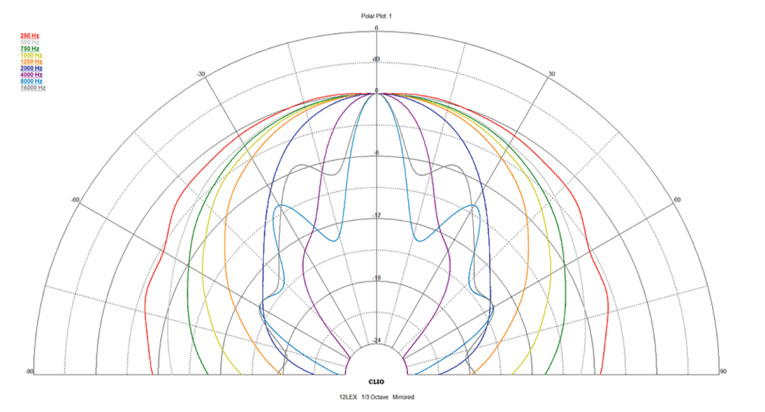
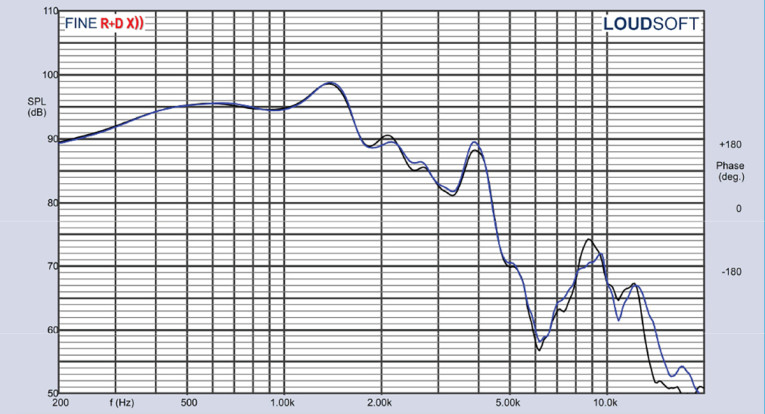
For the last remaining series of tests, I again employed the Listen Inc. SoundCheck AudioConnect analyzer and SCM microphone to measure distortion and generate time-frequency plots. For the distortion measurement, I rigidly mounted he 12” driver in free-air, and set the SPL to 104dB at 1m (11.4V) using a pink noise stimulus. Then, I measured the distortion with the Listen microphone placed 10cm from the driver. This produced the distortion curves shown in Figure 16. I then used SoundCheck to get a 2.83V/1m impulse response and imported the data into Listen’s SoundMap Time/Frequency software. Figure 17 shows the resulting CSD waterfall plot. Figure 18 shows the Wigner-Ville plot (for its better low-frequency performance).


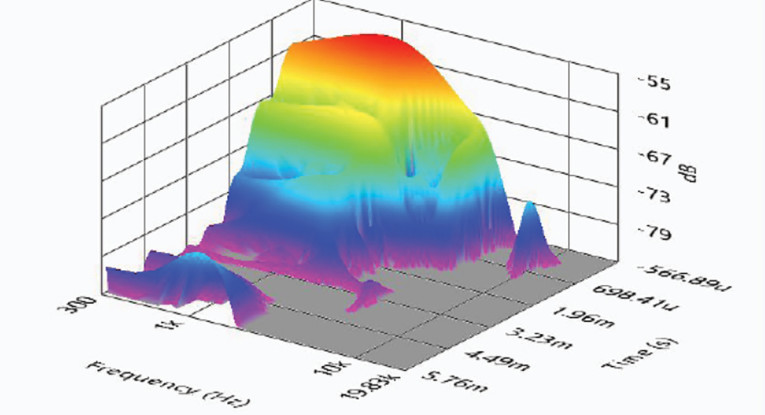
Looking at the objective data gathered on the 12LEX1300Nd, it, like all the transducers from Beyma that have been explicated in Test Bench, looks to be a very well-crafted driver with a good set of performance trade-offs, not to mention a world-class cooling system with Maltcross. For more information, visit www.beyma.com. VC
This article was originally published in Voice Coil, July 2021.




